Abstract
A prospective controlled trial was carried out to determine the usefulness of a viscoelastic polymer insole in prevention of stress fractures and stress reactions of the lower extremities. The subjects were 3,025 US Marine recruits who were followed for 12 weeks of training at Parris Island, South Carolina. Polymer and standard mesh insoles were systematically distributed in boots that were issued to members of odd and even numbered platoons. The most important finding was that an elastic polymer insole with good shock absorbency properties did not prevent stress reactions of bone during a 12-week period of vigorous physical training. To control for the confounding effects of running in running shoes, which occurred for about one and one-half hours per week for the first five weeks, we also examined the association of age of shoes and cost of shoes with injury incidence. A slight trend of increasing stress injuries by increasing age of shoes was observed. However, this trend did not account for the similarity of rates in the two insole groups. In addition, we observed a strong trend of decreasing stress injury rate by history of increasing physical activity, as well as a higher stress injury rate in White compared to Black recruits. The results of the trial were not altered after controlling for these factors. This prospective study confirms previous clinical reports of the association of stress fractures with physical activity history. The clinical application of a shock absorbing insole as a preventive for lower extremity stress reactions is not supported in these uniformly trained recruits. The findings are relevant to civilian populations.
Full text
PDF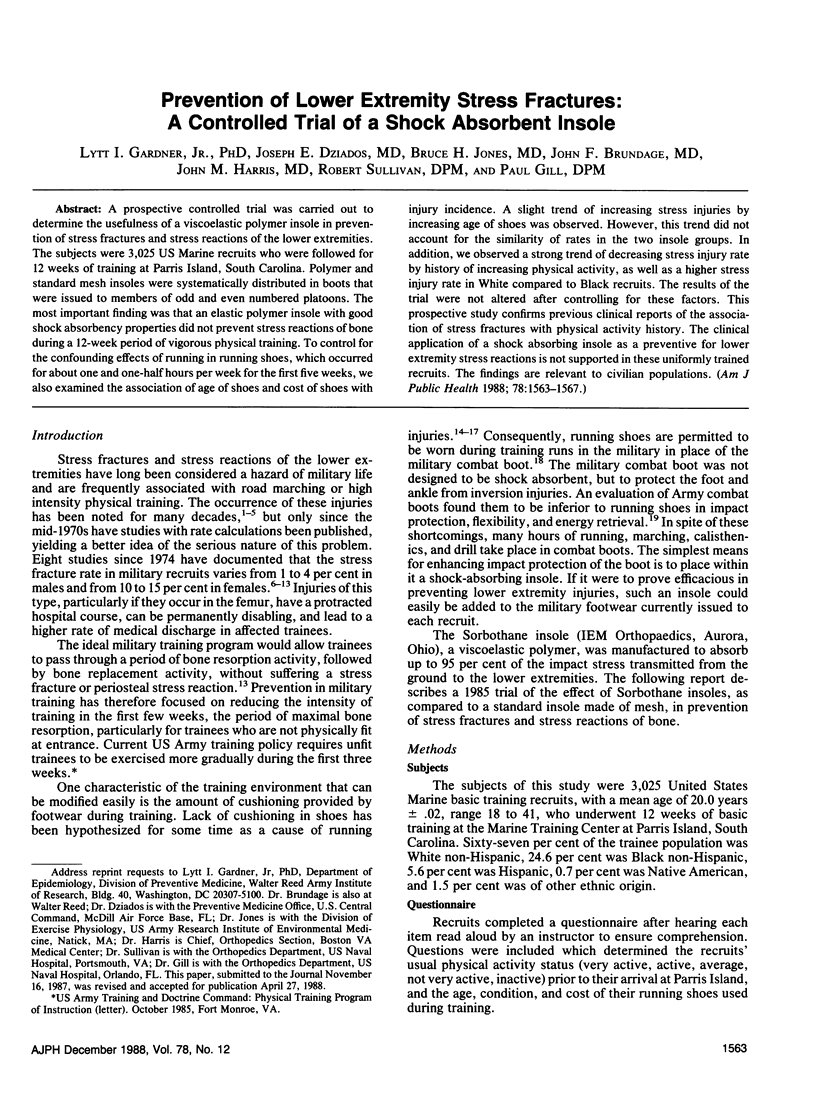
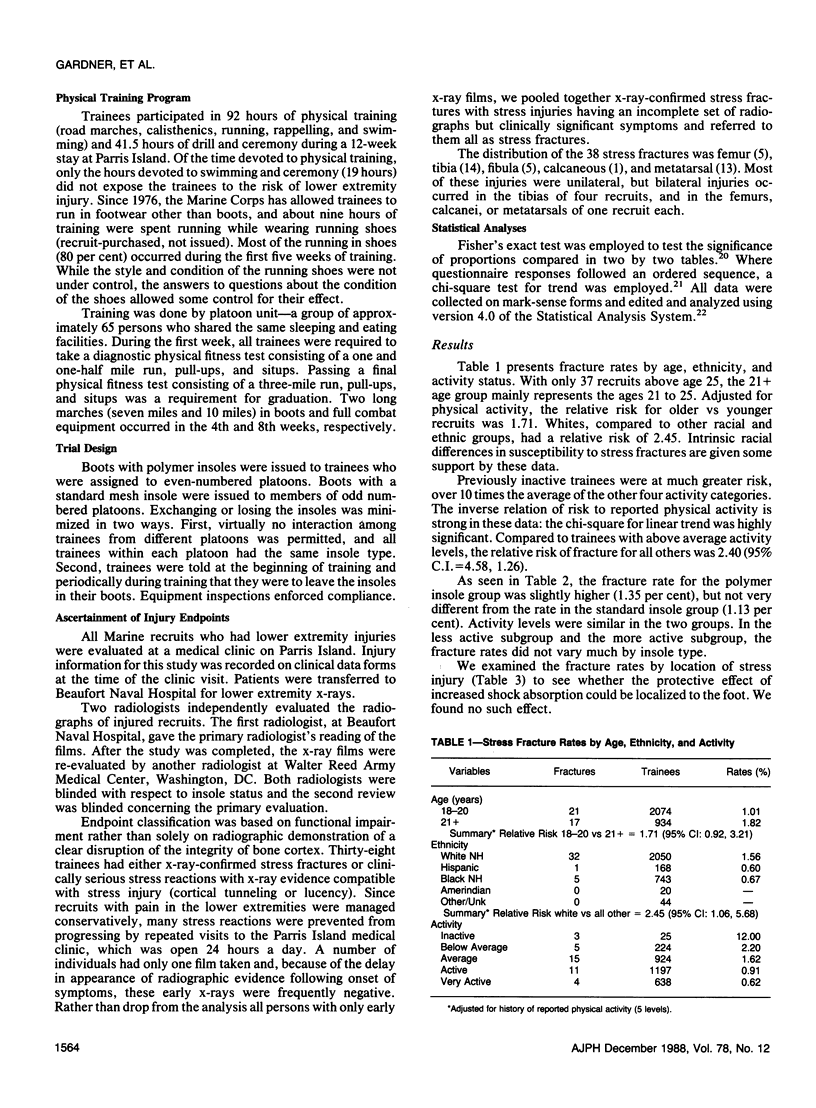
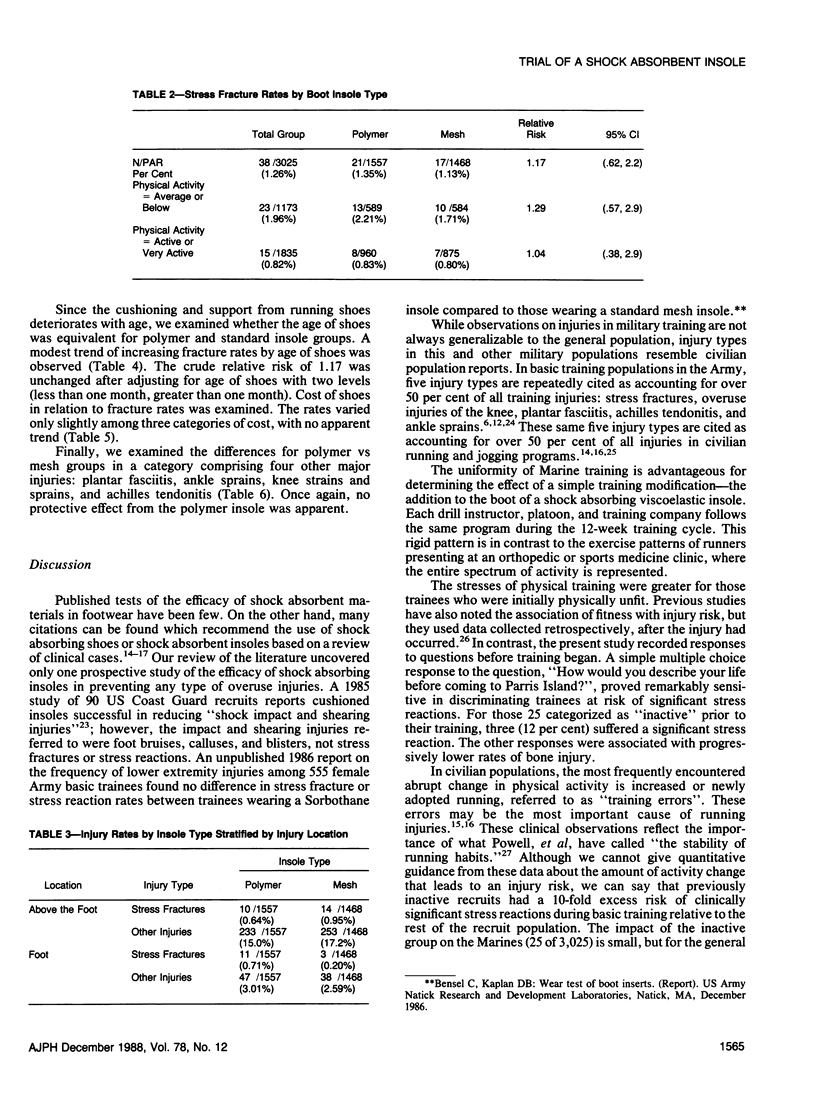
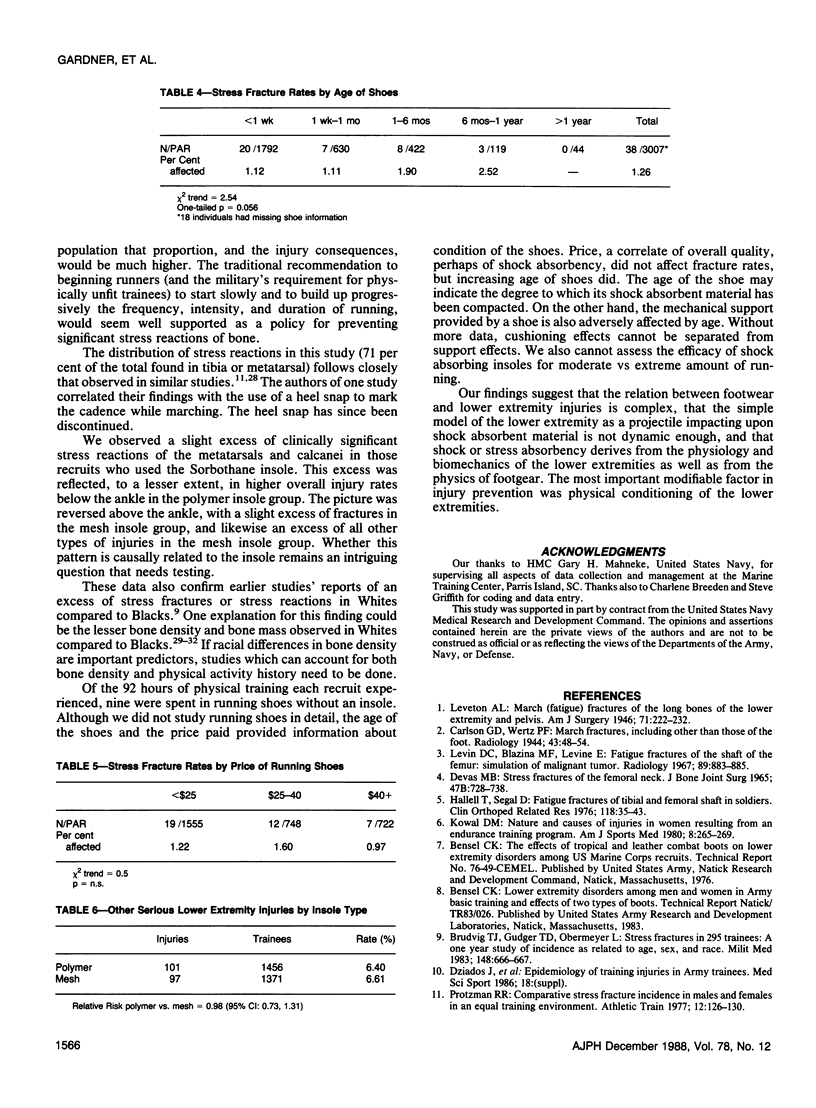
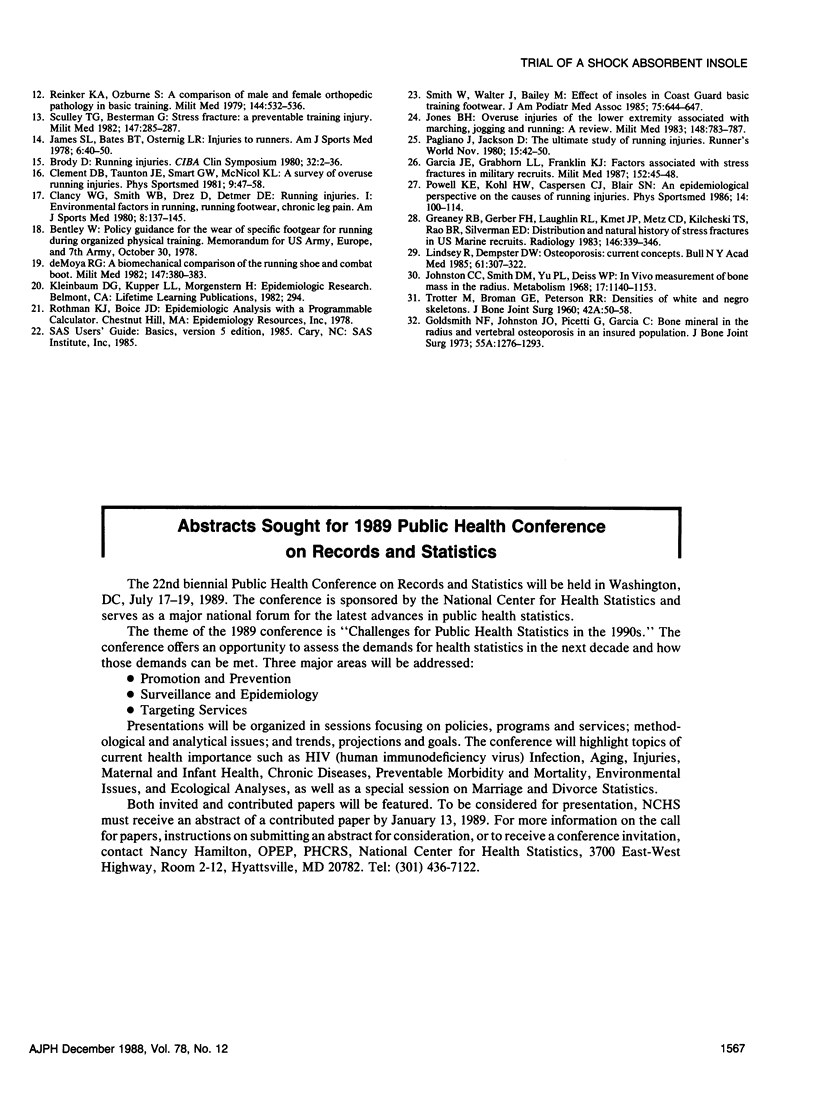
Selected References
These references are in PubMed. This may not be the complete list of references from this article.
- Brody D. M. Running injuries. Clin Symp. 1980;32(4):1–36. [PubMed] [Google Scholar]
- Brudvig T. J., Gudger T. D., Obermeyer L. Stress fractures in 295 trainees: a one-year study of incidence as related to age, sex, and race. Mil Med. 1983 Aug;148(8):666–667. [PubMed] [Google Scholar]
- Clancy W. G., Jr Runners' injuries. Part one. Am J Sports Med. 1980 Mar-Apr;8(2):137–144. doi: 10.1177/036354658000800218. [DOI] [PubMed] [Google Scholar]
- Garcia J. E., Grabhorn L. L., Franklin K. J. Factors associated with stress fractures in military recruits. Mil Med. 1987 Jan;152(1):45–48. [PubMed] [Google Scholar]
- Goldsmith N. F., Johnston J. O., Picetti G., Garcia C. Bone mineral in the radius and vertebral osteoporosis in an insured population. A correlative study using 125-I photon absorption and miniature roentgenography. J Bone Joint Surg Am. 1973 Sep;55(6):1276–1293. [PubMed] [Google Scholar]
- Greaney R. B., Gerber F. H., Laughlin R. L., Kmet J. P., Metz C. D., Kilcheski T. S., Rao B. R., Silverman E. D. Distribution and natural history of stress fractures in U.S. Marine recruits. Radiology. 1983 Feb;146(2):339–346. doi: 10.1148/radiology.146.2.6217486. [DOI] [PubMed] [Google Scholar]
- Hallel T., Amit S., Segal D. Fatigue fractures of tibial and femoral shaft in soldiers. Clin Orthop Relat Res. 1976 Jul-Aug;(118):35–43. [PubMed] [Google Scholar]
- James S. L., Bates B. T., Osternig L. R. Injuries to runners. Am J Sports Med. 1978 Mar-Apr;6(2):40–50. doi: 10.1177/036354657800600202. [DOI] [PubMed] [Google Scholar]
- Johnston C. C., Jr, Smith D. M., Yu P. L., Deiss W. P., Jr In vivo measurement of bone mass in the radius. Metabolism. 1968 Dec;17(12):1140–1153. doi: 10.1016/0026-0495(68)90094-2. [DOI] [PubMed] [Google Scholar]
- Jones B. H. Overuse injuries of the lower extremities associated with marching, jogging, and running: a review. Mil Med. 1983 Oct;148(10):783–787. [PubMed] [Google Scholar]
- Kowal D. M. Nature and causes of injuries in women resulting from an endurance training program. Am J Sports Med. 1980 Jul-Aug;8(4):265–269. doi: 10.1177/036354658000800410. [DOI] [PubMed] [Google Scholar]
- Lindsay R., Dempster D. W. Osteoporosis: current concepts. Bull N Y Acad Med. 1985 May;61(4):307–322. [PMC free article] [PubMed] [Google Scholar]
- Reinker K. A., Ozburne S. A comparison of male and female orthopaedic pathology in basic training. Mil Med. 1979 Aug;144(8):532–536. [PubMed] [Google Scholar]
- Scully T. J., Besterman G. Stress fracture--a preventable training injury. Mil Med. 1982 Apr;147(4):285–287. [PubMed] [Google Scholar]
- Smith W., Walter J., Jr, Bailey M. Effects of insoles in Coast Guard basic training footwear. J Am Podiatr Med Assoc. 1985 Dec;75(12):644–647. doi: 10.7547/87507315-75-12-644. [DOI] [PubMed] [Google Scholar]
- TROTTER M., BROMAN G. E., PETERSON R. R. Densites of bones of white and Negro skeletons. J Bone Joint Surg Am. 1960 Jan;42-A:50–58. [PubMed] [Google Scholar]
- deMoya R. G. A biomechanical comparison of the running shoe and the combat boot. Mil Med. 1982 May;147(5):380–383. [PubMed] [Google Scholar]


